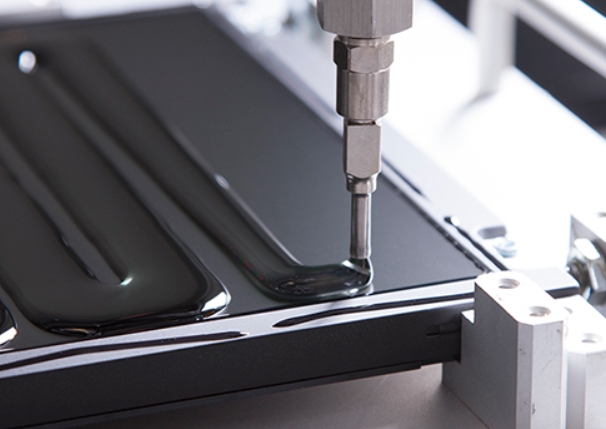Views: 231 Author: Reshine Display Publish Time: 2023-10-19 Origin: Site









Boyd's innovative optically clear adhesive bonding technology allows for thinner bond lines, resulting in thinner overall display stack-ups. OCA bonding joins layers together by using a dry-film pressure-sensitive adhesive. To eliminate air gaps in the assembly, OCA is pressure laminated to a substrate. This can bond a rigid component to another rigid component or a flexible component to a rigid component (such as an overlay).
1. Rigid-to-Rigid OCA Bonding: A vacuum chamber removes all air from between the layers, allowing two or more rigid components to adhere tightly.
2. Flexible OCA Bonding: With a manual roller or automated in-line rotary precision converting, a roller pushes all the air out from between the flexible component and the substrate (either flexible or rigid).
By eliminating all bubbles and air gaps, OCA achieves maximum optical clarity, making it ideal for applications where readability is critical. To ensure zero foreign object debris (FOD) or contamination, we generally handle, process, and assemble OCA in Class 100 clean rooms. Depending on the material and application, we have UV-resistant or UV-sensitive environments.
Thinner bond lines are the primary benefit of optically clear adhesive bonding technology. Whereas liquid optically clear adhesive (LOCA) bonding can achieve a bond line between 0.015′′ and 0.030′′, OCA bonding can achieve a bond line between 0.005′′ and 0.008′′. This bonding capability is ideal for components with thin walls, such as cover glass, touchscreens, and frameless LCDs.
Another advantage of optically clear adhesive bonding is that the sheet adhesive does not need to cure, which allows it to be completed faster than other bonding processes. When compared to liquid adhesives, using a sheet adhesive provides tighter tolerance, more consistent flat bond lines, and higher yield rates. There is no need for specialized dispensing equipment.
While optically clear adhesive has several advantages, it may not be appropriate for all applications. Unlike LOCA bonding, optically clear adhesive produces a bonded adhesive that cannot be reworked, necessitating a more stringent inspection and testing procedure to ensure high manufacturing yields.
Liquid optically clear adhesive bonding, as the name implies, involves bonding layers of a stack-up together with a liquid adhesive. The clear adhesive fills the entire space between display layers, rather than leaving an air gap between components. LOCA bonding is commonly used to join two rigid materials because of its increased impact resistance, sunlight readability, and optical clarity.
Boyd's engineers create custom fixtures for each display to fit the exact dimensions of the components. A consistent amount of liquid adhesive specific to the display design is dispensed by highly precise metering equipment. Our engineers create a program that measures out the correct amount of adhesive in the best dispensing pattern for each assembly.
In a class 10,000 clean room, the adhesive is cured with UV light. To ensure the highest quality assemblies, Boyd tests and inspects each display using sophisticated methods and equipment.
Because of its high overall performance and impact resistance, liquid, optically clear adhesive bonding is widely used. Another significant advantage of LOCA bonding is its high optical clarity, which is achieved by the liquid adhesive preventing air gaps from forming within the stack-up. Because it is a re-workable process, LOCA bonding is a popular solution. If necessary, the liquid adhesive can be removed and salvaged and reused components, increasing overall manufacturing yields. Click here for Liquid Optically Clear Adhesive Bonding.
Boyd has been providing LOCA bonding to a wide range of industries for over a decade. Boyd's experts use proprietary processes and adhesives to provide optimal bonding solutions for a variety of display applications. Read the following blogs in this series to learn more about Boyd's other display bonding technologies:
Air gap bonding is a low-cost and versatile display bonding technique. As the performance requirements for integrated touchscreens and displays evolve, effectively bonding display components together becomes increasingly important. A typical display is made up of many layers, such as cover glass, a touchscreen, and/or an LCD, all of which are integrated to ensure the display functions optimally under the conditions intended. Boyd combines these individual components with high-grade adhesives and proprietary bonding technologies.
Boyd, as a front panel integrator, provides three main bonding technologies to assist customers in developing the ideal display construction and component stack-up: air gap (or framed adhesive), rigid-to-rigid liquid optically clear adhesive (LOCA), and optically clear adhesive (OCA). Consumer, medical, military, automotive, instrumentation, and industrial controllers are all served by these bonding solutions.
In this three-part blog series, we discuss the advantages and disadvantages of each of these bonding technologies. To begin, we will look at one of Boyd's original display bonding capabilities: air gap bonding.
Air gap bonding creates a small air gap within the stack-up by wrapping a framed adhesive gasket around the perimeter of the display layers. Air gap bonding is significantly less expensive than other bonding options because there are no liquid adhesives to dispense and no cure time.
Because air-gap constructions are inexpensive and lightweight, they are popular for applications that do not require readability or impact resistance.
While the lower cost is advantageous, this construction may present some difficulties. Due to additional light refraction, the air gap can affect screen clarity in bright light. Displays with air gaps are also more prone to moisture damage and breakage, making them unsuitable for outdoor use or harsh environments.

